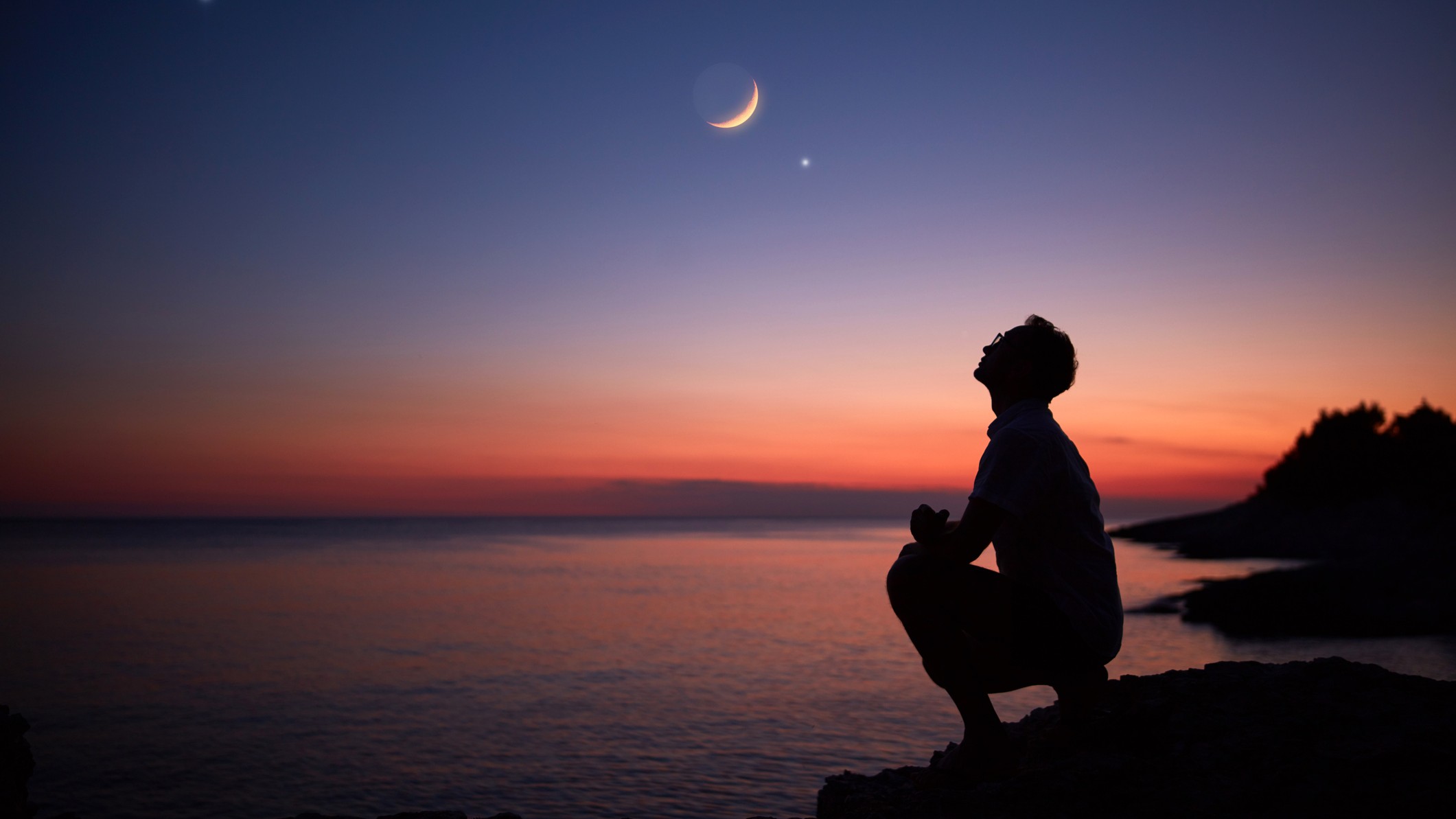Saturn will shine just above the crescent moon this weekend. Here's how to see it.
The spectacular Saturn-moon conjunction will happen just before sunrise in the east and can be seen from April 15 to 17.

Early risers will get a chance to see beautiful Saturn shining just above a slim waning crescent moon this week.
To spot the spectacular ringed planet dangling over the moon, look just above the east-southeast horizon about an hour before sunrise on Sunday, April 16.
The crescent moon will be just 17% illuminated as it wanes toward becoming a new moon on April 20. That's a great time to see "Earthshine" on the dark limb of the moon. This sunlight reflected from our planet makes the dark lunar surface visible to the naked eye, though it looks best through a pair of good stargazing binoculars. With a telescope, Saturn's rings should be visible.
To spot Saturn, look just 5 degrees above the moon. The ringed planet is rising two minutes earlier each morning compared to sunrise, according to When the Curves Line Up, a skywatching website run by astronomy educator Jeffrey Hunt. Saturn has been traveling farther from the sun from our point of view after its solar conjunction on Feb. 16, but Saturn is still difficult to see in twilight.
The darker the night sky, the easier it should be to see Saturn with the naked eye. According to NASA, the moonrise, at 4:45 a.m. EDT, begins a 45-minute window when the sky will be dark enough to easily see Saturn. You can check the exact times of Saturn-rise, moonrise and sunrise for your location and then use the moon as a guide to finding Saturn.
You should also be able to glimpse Saturn and the crescent moon the morning before and after their close conjunction. Before sunrise on Saturday, April 15, the crescent moon will be 27% illuminated and shine about 10 degrees to the right of Saturn. On Monday, April 17, the moon will be just 10% lit and barely visible about 10 degrees to the lower left of Saturn.
Sign up for the Live Science daily newsletter now
Get the world’s most fascinating discoveries delivered straight to your inbox.

Jamie Carter is a freelance journalist and regular Live Science contributor based in Cardiff, U.K. He is the author of A Stargazing Program For Beginners and lectures on astronomy and the natural world. Jamie regularly writes for Space.com, TechRadar.com, Forbes Science, BBC Wildlife magazine and Scientific American, and many others. He edits WhenIsTheNextEclipse.com.









